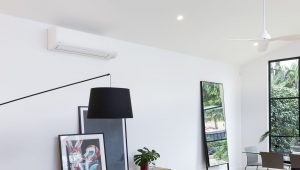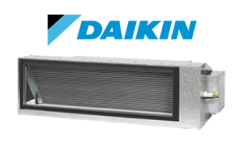
NSW Strata • 2025
Where can I legally drain AC condensate on a balcony in NSW strata?
Short answer: In NSW, the legal discharge for air-conditioning condensate is to an approved sanitary point (e.g., via a tundish to a floor waste gully or trapped waste) per AS/NZS 3500.2. Do not drip over the balcony edge or onto façades/other lots. Stormwater connections are only allowed where specifically permitted and designed by a licensed plumber—many schemes and councils won’t allow it.
Who is this for?
Apartment owners, strata committees, and installers in Sydney figuring out AC condensate drainage rules NSW—especially for balconies.
where to drain air conditioner water Sydney
strata bylaws for AC condensate drainage
balcony AC drain legal requirements
EEAT / BIO
This guide is prepared with reference to KYC Air Conditioning (Sydney)—specialists in strata installs, compliance packs, and balcony drainage solutions since 2015.
We’ve delivered 100+ strata jobs with compliant tundish connections, mini-pumps, and waterproofing sign-offs.
2) Approval Overview & “What’s in the Drainage Pack” Main keyword: AC condensate drainage rules NSW
What’s in the pack?
- Plan showing condensate route from indoor head to legal discharge point.
- Tundish detail and connection to floor waste gully or trapped fixture (laundry, bathroom).
- Waterproofing note (no membrane breaches; penetrations sealed).
- Mini-pump spec if gravity falls are impossible.
- Installer licence + insurances; strata minor renovation motion and photos after completion.
Rule of thumb: Prefer sanitary (sewer) connection via a compliant tundish or to a trapped waste. Never discharge across the balcony, into planters, or onto someone else’s lot.
Price & value
Typical condensate solutions in Sydney:
- Gravity to F.W.G. (short run): $180–$450
- Mini-pump kit installed: $350–$700
- Tundish + new FW point / re-work: $400–$900+
Legal costs may apply if your scheme requires a registered by-law for services alterations.
3) Design & Build Quality
Visual & practical
- Use neat trunking; keep pipework low-profile and accessible.
- Keep lines falling towards the discharge point; avoid sags that trap water.
- Add a drip tray only where manufacturer specifies; trays are not a substitute for legal drainage.
Materials & waterproofing
- UV-stable condensate pipe; sealed balcony penetrations.
- Maintain membrane integrity—use approved sleeves and sealants.
- Where connecting internally, discharge above the flood level rim via a tundish/air gap.
4) Performance Analysis (Drainage KPIs)
4.1 Core Functionality
- Primary use cases: Quiet, clean, code-compliant condensate removal from a balcony split-system.
- Metrics: Continuous fall (≥1%), pump head capacity (if used), legal discharge point per AS/NZS 3500.2, no leaks/drips.
- Real-world tests: Surry Hills 1-bed: gravity to laundry FW; Zetland 2-bed: mini-pump to bathroom tundish; Neutral Bay studio: FW on balcony to sanitary stack.
4.2 Key Performance Categories
Category 1 — Compliance (the big one)
Prefer sanitary connection via tundish to floor waste gully / trapped waste. Seek written strata approval if altering common property. Avoid stormwater unless expressly permitted by code and your plumber confirms it’s lawful on your site.
Category 2 — Waterproofing safety
Any penetration through balcony screed/membrane must be sealed and documented. Photograph layers before cover-up. Keep discharges away from façades to prevent efflorescence and staining.
Quick Flow Estimator (guide only)
Room area (m²) • Humidity• Fan speed
Result: —
Helps choose gravity vs mini-pump. Always confirm with manufacturer data.
5) User Experience (What to Expect)
- Ask strata/manager for any air conditioner water discharge regulations NSW by-law and building drainage drawings.
- Site check for nearby legal discharge points: balcony floor waste (connected to sanitary), laundry/bath FW, or bathroom tundish path.
- Choose method: Gravity first; if not possible, specify a quiet mini-pump with service access and alarm.
- Lodge minor-renovation motion with drawings. Protect common areas on install day. Keep a photo log.
- Post-install: commissioning, leak test, handover pack (as-builts, pump manual, photos).
6) Comparative Analysis — Drainage Options
| Option | Compliance | Noise risk | Pros | Watch-outs |
|---|---|---|---|---|
| Gravity to indoor FW/tundish | Strong | Low | No moving parts; cheapest to maintain | Needs continuous fall; careful sealing |
| Mini-pump to sanitary via tundish | Strong | Med | Works where gravity is impossible | Service access; pump noise; reliability |
| Balcony floor waste to sanitary stack | Strong (if FW is sanitary) | Low | Shortest run on balconies with FW | Verify FW isn’t stormwater only |
| Direct to stormwater | Conditional/Rare | Low | Simple (if expressly permitted) | Often not allowed; pollution rules; approvals |
| Drip over balcony/into planters | Non-compliant | High | None | Leaks, disputes, damage, by-law breaches |
7) Pros & Cons of Doing It Right
What We Loved
- Fewer neighbour complaints; zero balcony stains.
- Protects membranes and avoids costly defect claims.
- Documented compliance boosts resale confidence.
Areas for Improvement
- By-law/admin time can delay install.
- Mini-pumps add cost and need servicing.
- Older buildings may lack nearby sanitary points.
8) Evolution & Updates (2025)
- AS/NZS 3500 series remains the reference for air conditioning condensate to stormwater/sewer connection; NSW advisory notes emphasise tundish to floor waste/trapped sanitary connection.
- Strata committees are tightening balcony drainage and waterproofing compliance, requiring before/after photos and pump maintenance plans.
Always confirm the floor waste on your balcony is sanitary—not stormwater—before connecting.
9) Purchase/Install Recommendations
Best For
- Owners wanting a clean, compliant balcony install with no leaks.
- Strata committees standardising approved discharge points.
Skip If
- Your by-laws prohibit balcony services alterations.
- No sanitary point within feasible route and pump noise is unacceptable.
Alternatives to Consider
- Internal head with concealed drain to bathroom tundish.
- Relocate outdoor unit to a serviceable common area with sanitary access.
10) Where to Buy / Who to Contract
- Use NSW-licensed plumbers and ARCtick installers who provide a condensate compliance pack (drawings + photos + commissioning).
- Shop shoulder seasons for better scheduling and strata meeting timing.
11) Final Verdict
Overall rating: 9.2/10 for balcony installs that drain to a sanitary point via a tundish or trapped waste. It’s quiet, neat, and code-compliant.
Bottom line: Drain legally (sanitary first), protect membranes, and document everything. That’s how you avoid defects, disputes and expensive rectification.
12) Evidence & Proof
Quick explainer (YouTube)
Short overview of legal drainage points, tundish basics and balcony tips.
Screenshots / Snippets
NSW advisory (tundish): “Tundishes receiving discharges from air-conditioning units may discharge to a floor waste gully.”
Strata practice (2025): Committees now require photos of sealed penetrations and pump maintenance plans as part of minor-renovation approvals.
Case studies (2025)
- Waterloo, 12-storey strata: Balcony FW confirmed sanitary → gravity run with inspection tee. No further stains; breach notice withdrawn.
- Ultimo retrofit: No gravity fall → mini-pump to bathroom tundish; quarterly service added to by-law conditions.














